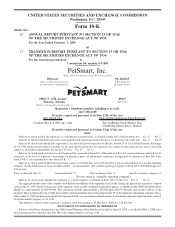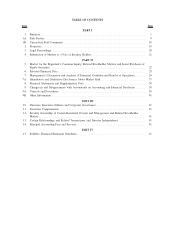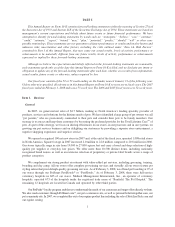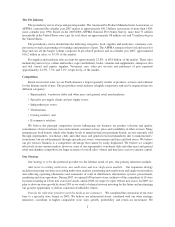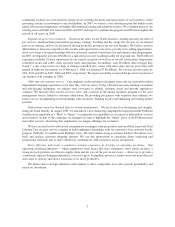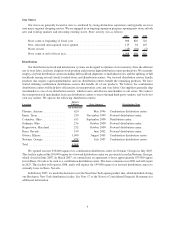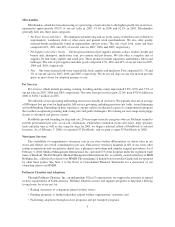Petsmart 2007 Annual Report Download - page 15
Download and view the complete annual report
Please find page 15 of the 2007 Petsmart annual report below. You can navigate through the pages in the report by either clicking on the pages listed below, or by using the keyword search tool below to find specific information within the annual report.Item 1A. Risk Factors
In the normal course of business, our operations, financial condition and results of operations are routinely
subjected to a variety of risks. Our actual financial results could differ materially from projected results due to some
or all of the factors discussed below. You should carefully consider the risks and uncertainties described below, as
well as those discussed in the “Competition,” “Our Stores,” “Distribution” and “Government Regulation” sections
of this Annual Report on Form 10-K.
Comparable store sales growth may decrease as stores grow older. If we are unable to increase sales at our
existing stores, our results of operations could be harmed.
We can make no assurances that our stores will meet forecasted levels of sales and profitability. As a result of
new store openings in existing markets, and because older stores will represent an increasing proportion of our store
base over time, our comparable store sales performance may be severely impacted in future periods. In addition, a
portion of a typical new store’s sales comes from customers who previously shopped at other PetSmart stores in the
existing market.
We may be unable to continue to open new stores and enter new markets successfully. If we are unable to
successfully reformat existing stores and open new stores, our results of operations could be harmed. Also,
store development may place increasing demands on management and operating systems and may erode
sales at existing stores.
We currently operate stores in most of the major market areas of the United States and Canada. Our plans for
2008 include opening 104 net new stores, primarily in existing multi-store markets, opening 45 new PetsHotels and
completing the refresh of a portion of our existing stores. Our ability to be successful with our store development
efforts is dependent on various factors, some of which are outside of our control, including:
• Identifying store sites that offer attractive returns on our investment including the impact of cannibalization
of our existing stores;
• Competition for those sites;
• Successfully negotiating with landlords and obtaining any necessary governmental, regulatory or private
approvals;
• Timely construction of stores; and
• Our ability to attract and retain qualified store personnel.
To the extent we are unable to accomplish any of the above, our ability to open new stores and hotels may be
harmed and our future sales and profits may be adversely affected. In addition, we can make no assurances that we
will be able to meet the forecasted level of sales or operate our new stores or hotels profitably.
The increased demands placed on existing systems and procedures and on management by our store
development plans also could result in operational inefficiencies and less effective management of our business
and associates, which could in turn adversely affect our financial performance. Opening new stores in a market will
attract some customers away from other stores already operated by us in that market and diminish their sales. An
increase in construction costs and/or building material costs could also adversely affect our financial performance.
Our leases are typically signed approximately 18 months before a store opens. Because of that timing, we may
be unable to adjust our store opening schedule to new economic conditions or a change in strategy in a timely
manner.
A decline in consumers’ discretionary spending or a change in consumer preferences could reduce our sales
and harm our business.
Our sales depend on consumer spending, which is influenced by factors beyond our control, including general
economic conditions, the availability of discretionary income and credit, weather, consumer confidence and
unemployment levels. We may experience declines in sales during economic downturns. Any material decline in the
9


